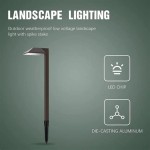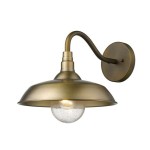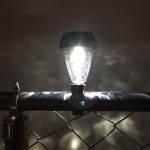How Do I Take Good Outdoor Pictures With My iPhone 14?
The iPhone 14, boasting advanced camera capabilities, presents a powerful tool for capturing stunning outdoor photographs. However, realizing the full potential of this device requires understanding its features and mastering fundamental photography techniques. This article outlines key strategies for optimizing outdoor photography using the iPhone 14, covering aspects from camera settings to composition and lighting.
Understanding the iPhone 14 Camera System
The iPhone 14 features a sophisticated camera system comprising multiple lenses, advanced image processing capabilities, and software enhancements designed to improve image quality across a variety of shooting conditions. Familiarity with these components is crucial for effective utilization.
The primary wide-angle lens, typically the most frequently used, benefits from improved sensor size and aperture, enhancing low-light performance and dynamic range. The ultra-wide lens offers a broader field of view, suitable for capturing sweeping landscapes or architectural subjects. The front-facing TrueDepth camera is also capable of capturing high-quality images, especially useful for outdoor portraits and selfies. The iPhone 14 also utilizes computational photography techniques, employing algorithms to optimize image details, color accuracy, and noise reduction. Smart HDR 4 intelligently balances highlights and shadows, while Deep Fusion enhances detail in mid- to low-light conditions. The Photographic Styles feature allows for customization of image tones, providing control over warmth, vibrancy, and contrast before capturing the image itself.
Mastering the iPhone 14 camera involves understanding its menu options and how to adjust settings for different scenarios. Access to settings like resolution, frame rate, and grid overlays can significantly impact the final results. Experimentation with these options is recommended to develop a personalized workflow.
Optimizing Camera Settings for Outdoor Environments
Specific environmental conditions necessitate adjustments to camera settings to ensure optimal image quality. Light conditions, subject matter, and desired aesthetic all influence the appropriate settings to employ.
When shooting in bright sunlight, overexposure can be a common issue. To mitigate this, utilizing the exposure compensation feature, accessible by tapping on the screen and adjusting the sun icon, is critical. Reducing the exposure value darkens the image, preventing blown-out highlights. Conversely, in overcast or shaded environments, increasing the exposure value brightens the image. The iPhone 14 also offers various shooting modes, including Portrait mode for creating shallow depth-of-field effects and Night mode for capturing detailed images in low-light situations. Understanding the strengths and limitations of each mode is essential for effective application. ProRAW format captures more image data than standard JPEG, providing greater flexibility during post-processing. However, ProRAW files are larger and require more storage space.
Focus is another critical aspect. While the iPhone's autofocus system is generally reliable, manually adjusting the focus point by tapping on the screen allows for precise control. In situations with complex compositions or moving subjects, locking the focus by pressing and holding on the desired focus point enables continuous focus tracking.
Composition Techniques for Compelling Outdoor Photography
Beyond technical aspects, composition plays a vital role in creating visually appealing and engaging photographs. Applying established compositional guidelines can elevate outdoor photography from snapshots to artistic expressions.
The rule of thirds suggests dividing the frame into nine equal parts using two horizontal and two vertical lines. Placing key elements along these lines or at their intersections creates a more balanced and dynamic composition. Leading lines, such as roads, rivers, or fences, can draw the viewer's eye into the scene and create a sense of depth. Paying attention to symmetry and patterns can also result in visually striking images. Looking for repeating shapes, colors, or textures can add a layer of interest to the scene.
Consider the foreground, middle ground, and background of the image to create a sense of depth and perspective. Including a strong foreground element can provide context and scale, while the background serves as a backdrop for the main subject. Experimenting with different angles and perspectives can dramatically alter the impact of the photograph. Shooting from a low angle can emphasize the size and grandeur of subjects, while a high angle can provide a broader overview of the scene.
Leveraging Lighting in Outdoor Photography
Light is arguably the most critical element in photography, and understanding how it affects the scene is essential for capturing captivating images. Different types of light, ranging from harsh sunlight to soft, diffused light, create distinct moods and effects.
The golden hour, the period shortly after sunrise and before sunset, is often considered the best time for outdoor photography. During this time, the light is warm, soft, and directional, creating flattering shadows and highlights. Avoiding midday sun, which can produce harsh shadows and overexposed areas, is generally recommended. However, even midday sun can be used creatively by seeking out shaded areas or using it to create dramatic silhouettes.
Cloudy or overcast days provide soft, diffused light, which is ideal for portraiture and capturing details. The even lighting eliminates harsh shadows and provides a more uniform illumination. Utilizing reflectors can bounce light onto the subject, filling in shadows and adding a touch of brightness. A simple white board or even a piece of aluminum foil can serve as a reflector.
Paying attention to the direction of light is also crucial. Side lighting can emphasize texture and shape, while backlighting can create silhouettes or rim lighting effects. Experimenting with different lighting angles can help reveal the qualities of the subject and create a more visually interesting image.
Utilizing iPhone 14 Specific Features for Outdoor Photography
The iPhone 14 incorporates specific features that enhance its capabilities in outdoor photography scenarios. Understanding and utilizing these features can significantly improve the final results.
The improved sensor size and aperture of the main wide-angle lens contribute to better low-light performance. This is particularly useful for capturing images in dimly lit outdoor environments, such as during twilight or under heavy cloud cover. The Photonic Engine, a feature that Apple introduced, further enhances image processing, improving detail and clarity in low-light conditions. The Photographic Styles feature allows for customized color palettes and tonal adjustments. This feature allows the user to tailor the look of the images to match their personal preferences or the specific mood they are trying to convey.
Cinematic mode is not just for video; it can also be used creatively for still photography. It allows for a shallow depth of field, creating a blurred background and emphasizing the subject. This can be particularly effective for outdoor portraits. Action mode is designed to stabilize video footage while the user is in motion. However, it can also be used to capture sharper still images in situations where the camera is shaking or trembling.
Post-Processing Techniques for Enhancing Outdoor Photographs
Post-processing plays a crucial role in refining and enhancing outdoor photographs captured with the iPhone 14. Even well-composed and lit images can benefit from subtle adjustments to improve their overall impact.
Built-in editing tools within the Photos app offer a range of options for adjusting exposure, contrast, highlights, shadows, and color. These tools allow for precise control over the image's overall look and feel. Third-party editing apps, such as Adobe Lightroom Mobile or Snapseed, provide more advanced features and greater flexibility. These apps offer tools for selective adjustments, noise reduction, and sharpening, allowing for more targeted enhancements.
Cropping is another essential post-processing technique. Cropping can improve the composition of the image, remove distracting elements, or change the aspect ratio. Straightening the horizon is a simple but effective way to improve the overall visual appeal of the photograph. Ensuring that the horizon line is level creates a more balanced and professional-looking image.
Experimentation with different editing styles is encouraged. However, it's important to avoid over-processing the image, which can result in an unnatural or artificial look. Subtle adjustments that enhance the natural qualities of the scene are generally preferred.
Protecting Your iPhone 14 in Outdoor Environments
While the iPhone 14 is relatively durable, it's essential to take precautions to protect it from the elements when shooting outdoors. Exposure to water, dust, and extreme temperatures can damage the device.
Using a waterproof or water-resistant case is recommended, especially when shooting near water or in rainy conditions. These cases provide a barrier against moisture and prevent water damage. Protecting the screen from scratches is also important. A screen protector can prevent scratches and cracks caused by sand, dirt, or other abrasive materials. Keeping the lens clean is essential for maintaining image quality. Use a microfiber cloth to gently wipe away dust, fingerprints, or smudges from the lens.
Avoid exposing the iPhone 14 to extreme temperatures. Prolonged exposure to direct sunlight can cause the device to overheat, while exposure to freezing temperatures can drain the battery. Storing the iPhone in a cool, dry place when not in use is recommended. A portable charger can be useful for extending battery life when shooting outdoors for extended periods. This can ensure that the user doesn't run out of power at a critical moment.
By understanding the iPhone 14’s camera system, optimizing settings for specific environments, mastering composition techniques, leveraging lighting, and utilizing specific features, individuals can capture high-quality images. Adhering to these practices can maximize the photographic potential of the iPhone 14 in diverse outdoor settings.

Iphone 14 Pro Tips And How To S Cnn Underscored

Apple Iphone 14 Pro Max Review Nearly Perfect Digital Trends

Iphone 14 Pro Max The Best Settings

Iphone 14 Pro Max Review The 48 Megapixel Is Legit
Apple Iphone 14 Pro Review The Only You Really Need Petapixel

Iphone 14 Pro Vs 13 S Compared Photographer

Iphone 14 Pro Review Effortlessly Superb Digital Trends

Apple Iphone 14 Pro Review Forbes Vetted

Apple Iphone 14 Pro Test Dxomark

Apple Iphone 14 Pro Max Review Photo Quality
Related Posts







